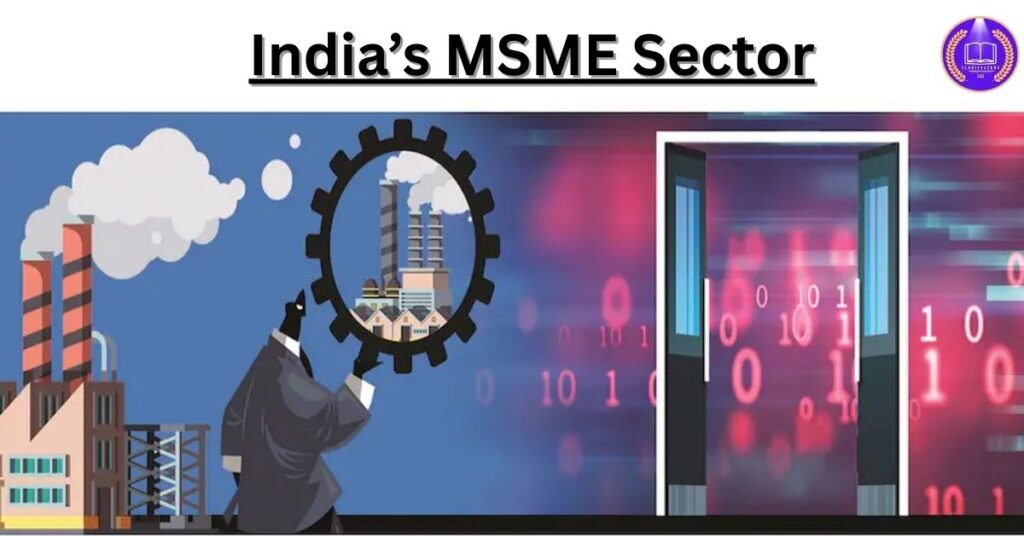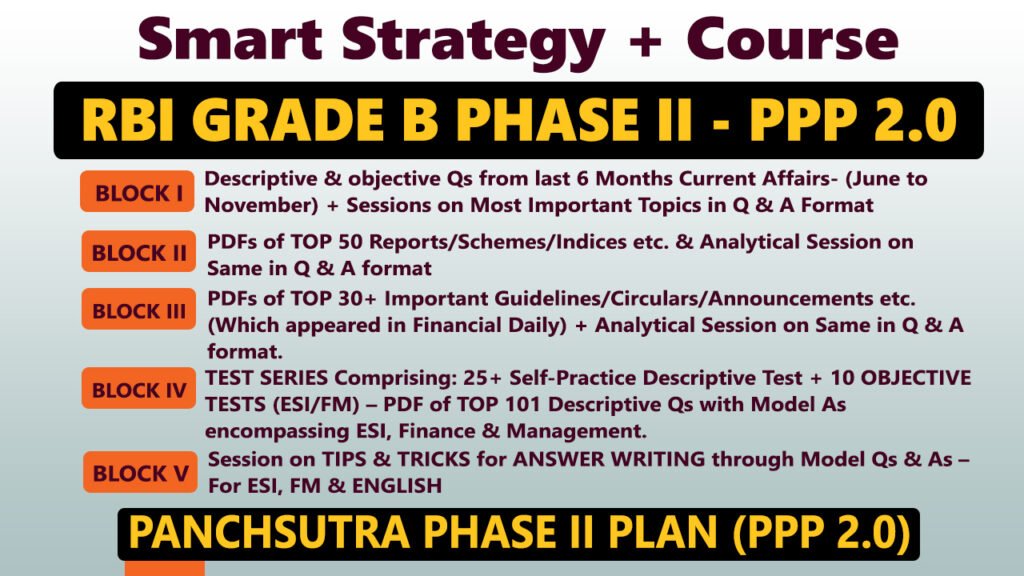
Introduction
India’s Micro, Small, and Medium Enterprises (MSME) sector is widely recognized as the engine of economic growth, job creation, and innovation. With over 6.3 crore enterprises contributing significantly to GDP, exports, and employment, MSMEs form the backbone of India’s socio-economic development. In this blog, we’ll dive deep into the structure, contribution, challenges, and policy support for the MSME sector.
Definition and Classification of MSMEs
The definition of MSMEs was revised under the Atmanirbhar Bharat Abhiyan in 2020 to include both investment and turnover criteria. The classification is as follows:
| Enterprise Type | Investment in Plant & Machinery or Equipment | Annual Turnover |
|---|---|---|
| Micro | Up to ₹1 crore | Up to ₹5 crore |
| Small | Up to ₹10 crore | Up to ₹50 crore |
| Medium | Up to ₹50 crore | Up to ₹250 crore |
The new classification removed the distinction between manufacturing and service sectors, promoting ease of doing business.
Role of MSMEs in the Indian Economy
MSMEs contribute extensively to the inclusive and sustainable growth of India. Here’s how:
- Exports:
- Contribute ~45% of India’s total exports
- Manufacturing Output:
- Account for over 30% of GDP
- Employment:
- Provide employment to over 11 crore people, second only to agriculture
- Entrepreneurship:
- Promote grassroots entrepreneurship, especially in rural and semi-urban areas
- Industrialization:
- Encourage decentralized industrial development
Key Statistics
| Indicator | Value/Share |
|---|---|
| Total MSMEs in India | 6.3 crore |
| Employment Provided | Over 11 crore |
| Share in GDP | Around 30% |
| Share in Exports | ~45% |
| Share of Rural MSMEs | Around 51% |
Legal and Regulatory Reforms
Major Laws Impacting MSMEs
- MSMED Act, 2006 –
- Governs definition, development, and promotion of MSMEs
- Insolvency and Bankruptcy Code (IBC) –
- Now simplified for MSMEs under pre-pack mechanism
- The Jan Vishwas Bill, 2023 –
- Decriminalized minor offences and simplified compliance
- Faceless Assessment and GST Simplification –
- For ease of doing business
Major Benefits and Advantages
- Economic Growth Driver
- Employment Generation
- Low Capital Requirement
- Regional Development
- Export Promotion
- Supports Make in India & Digital India
Case Studies: Success Stories in India
Case Study 1: Jaipur Rugs
- A small enterprise from Rajasthan that empowers 40,000+ rural artisans (majority women)
- Expanded globally through digital channels and exports
- Combines traditional skills with modern e-commerce
Case Study 2: Paper Boat (Hector Beverages)
- Started as an MSME focusing on ethnic Indian beverages
- Leveraged branding and packaging innovation to capture premium markets
- Now exports to 10+ countries
Case Study 3: Ather Energy
- Began as a medium enterprise in the EV space
- Received funding from Flipkart co-founders, Tiger Global
- Shows how medium-scale startups can drive innovation and manufacturing in India
MSME Sector: Global Comparisons
| Country | Contribution of MSMEs to GDP | Employment Share | Key Sectors |
|---|---|---|---|
| India | ~30% | ~40% | Textiles, handicrafts, services |
| China | ~60% | ~80% | Electronics, manufacturing |
| USA | ~50% | ~47% | IT, healthcare, retail |
| Germany | ~53% | ~70% | Engineering, automobile parts |
India still lags behind in MSME productivity and tech adoption compared to China and Germany, underlining the need for policy support and upskilling.
Challenges Faced by MSMEs
Despite their significance, MSMEs face several hurdles:
1. Access to Finance
- Limited credit history and high collateral demand from banks
- Dependence on informal sources of credit
2. Technological Obsolescence
- Lack of access to modern technologies
- Low investment in R&D
3. Skilled Manpower Shortage
- Inadequate training and skill development
- High attrition rates in small units
4. Compliance Burden
- Complex GST filings and regulatory frameworks
- Delay in payments from large buyers and PSUs
5. Infrastructure Gaps
- Power shortages, poor logistics, and high input costs
Government Initiatives and Schemes
The Government of India has launched several schemes to support and revive MSMEs:
Credit Support
- Credit Guarantee Fund Trust for Micro and Small Enterprises (CGTMSE)
- Emergency Credit Line Guarantee Scheme (ECLGS)
- PM MUDRA Yojana for micro-unit funding
Infrastructure and Cluster Development
- Scheme of Fund for Regeneration of Traditional Industries (SFURTI)
- Micro and Small Enterprises Cluster Development Programme (MSE-CDP)
Technology & Digitalization
- Credit Linked Capital Subsidy Scheme (CLCSS)
- Digital MSME Scheme
Market Access and Promotion
- Procurement Policy mandates 25% sourcing from MSMEs by CPSEs
- Trade Receivables Discounting System (TReDS) platform
Skill Development
- Entrepreneurship and Skill Development Programme (ESDP)
- ZED Certification Scheme (Zero Defect, Zero Effect)
Graphical Representation: Contribution to Economy
MSME Share in Key Economic Indicators (2023-24)
GDP Contribution ▓▓▓▓▓▓▓▓▓░░ 30%
Export Share ▓▓▓▓▓▓▓▓▓▓░ 45%
Employment Share ▓▓▓▓▓▓▓▓▓▓▓░ 40%Digital Transformation in MSMEs
Digitalization is rapidly transforming MSMEs through:
- E-commerce platforms (e.g., Amazon, Flipkart onboarding sellers)
- UPI & Digital Payments
- Cloud computing and ERP adoption
- Government e-Marketplace (GeM) participation
- Digital onboarding under Udyam Registration portal
Recent Reforms and Budget Highlights
Recent Reforms
- Revised MSME definition for inclusivity
- Udyam Registration simplified the registration process
- ONDC Integration to promote digital commerce
Union Budget 2024–25 Highlights for MSMEs
- ₹22,000 crore allocated to development of MSME clusters
- Skill India Digital Platform launched for upskilling
- Reduction in compliance burden through Jan Vishwas Bill
- Extension of ECLGS scheme to high-stress sectors
Future Outlook and Recommendations
Opportunities
- Integration with global value chains (GVCs)
- Export potential in sunrise sectors like EVs, AI, textiles
- Green MSMEs for sustainability
Recommendations
- Strengthen access to low-cost formal credit
- Enhance digital literacy and technology adoption
- Improve ease of doing business and single-window clearance
- Promote R&D and innovation
- Enforce timely payments through strict penalties
Conclusion
India’s MSME sector is a powerful pillar of the economy, embodying the vision of a self-reliant and inclusive India. With the right policy framework, technological adoption, and financial support, MSMEs can not only boost GDP but also create a vibrant and self-sustaining entrepreneurial ecosystem across the country.
As India moves towards becoming a $5 trillion economy, empowering its MSME sector will be critical for inclusive and resilient growth.



















